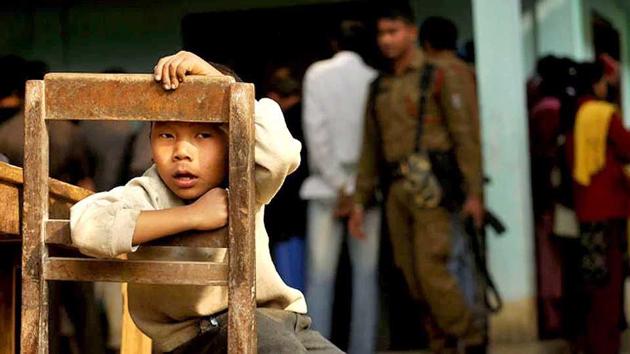That Rohingya feeling: NE no stranger to xenophobia, genocides, say experts
Almost every community or sub-region has a word, often used derogatorily, for outsiders. But the animosity is not restricted to those considered outsiders.
Killing of Rohingya Muslims in Myanmar and their exodus to Bangladesh, described by a top UN official as ethnic cleansing, is similar to what many communities across the eight Northeast states in India have suffered intermittently since 1948, according to social scientists.

Tribe or region-specific extremist groups in the Northeast are blamed in most cases of targeted killings, often labelled as “riots” despite being one-sided or xenophobic mass movements, the social scientists argue.
Clashes are often attributed to the insular characteristic of most ethnic groups that makes them suspicious of other cultures and view numerically, resourcefully and economically more powerful communities as aggressors.
The perception, more of secessionist groups, that “mainstream” groups such as Hindi and Bengali speakers have replaced the British as colonisers is also a factor, according to Northeast watchers.
Political scientist Akhil Ranjan Dutta acknowledges these as factors, but says the main reason for conflicts is the penetration of state dynamics into mostly tribal communities used to a certain kind of living and resource-sharing.
“The ultimate aim is political space for every community. The state has been playing a divisive role because it cannot control or face collective resistance. This division has percolated down to ethnically different communities, among tribes that have been neighbours for years and within certain tribes,” he said.
The Northeast has not had any major incident of targeted killing since 2012 when 114 people were murdered and 450,000 displaced in the Bodo tribe-dominated Bodoland Territorial Council (BTC) areas of western Assam. The victims were most migrant Bengali Muslims.
“But given the seeds of distrust sown as a political strategy, there is unlikely to be an end to ethnic violence in the region,” Dutta, who teaches political science at Gauhati University, told HT.
Bengali academic Nabanipa Bhattacharjee wrote of “breathing in an atmosphere of immense vulnerability, torment and fear” in Meghalaya capital Shillong in the 1980s and 1990s.
“I witnessed… the non-tribals of Shillong being persecuted and brutally murdered. I recall the disruption of puja processions, days and nights of curfew, army flag marches, the rush for essential supplies, night vigils, shuttered shops, deserted streets, the plight of refugees, looting, arson, and much more. I, therefore, joined the great dkhar (Khasi word meaning foreigner) exodus and left Shillong in 1994,” she wrote for a website in 2015.

Almost every community or sub-region has a word, often used derogatorily, for outsiders. What dkhar is to Meghalaya, vai is to Mizoram, mayang to Manipur, and fatarniborok to Tripura. In Assam, the word bohiragata is often used to distinguish outsiders from the khilonjia (indigenous).
But the animosity is not restricted to those considered outsiders. For instance, extremists batting for the Nagas have a history of hostility toward those clubbed as Kukis.
“We observe September 13 as black day to mark the massacre of 108 Thadou (Kuki) tribal people by National Socialist Council of Nagaland (Isak-Muivah) in Manipur’s Joupi and Janglenphai villages in 1993. Between 1992 and 1995, more than 1,000 Kukis were killed and 100,000 displaced,” Michael Lamjathang Haokip, a Thadou student leader, said.
The fight for political space has also seen intra-tribe conflicts, specifically among the Bodos and Karbis of Assam over the years.
Assam home department’s data given to the assembly in 2016 said the state had witnessed eight bloody ethnic clashes since 2001. These clashes claimed 535 lives, including 80 women and 45 children.
A 2011 report by the Internal Displacement Monitoring Centre said ethnic violence in Northeast India forced almost a million people to flee homes over the past 20 years. “More than 76,000, according to conservative estimates, are still living in displacement,” the report said, adding that the displaced have usually been forgotten.
Get Current Updates on India News, Lok Sabha Election 2024 live, Infosys Q4 Results Live, Elections 2024, Election 2024 Date along with Latest News and Top Headlines from India and around the world.




